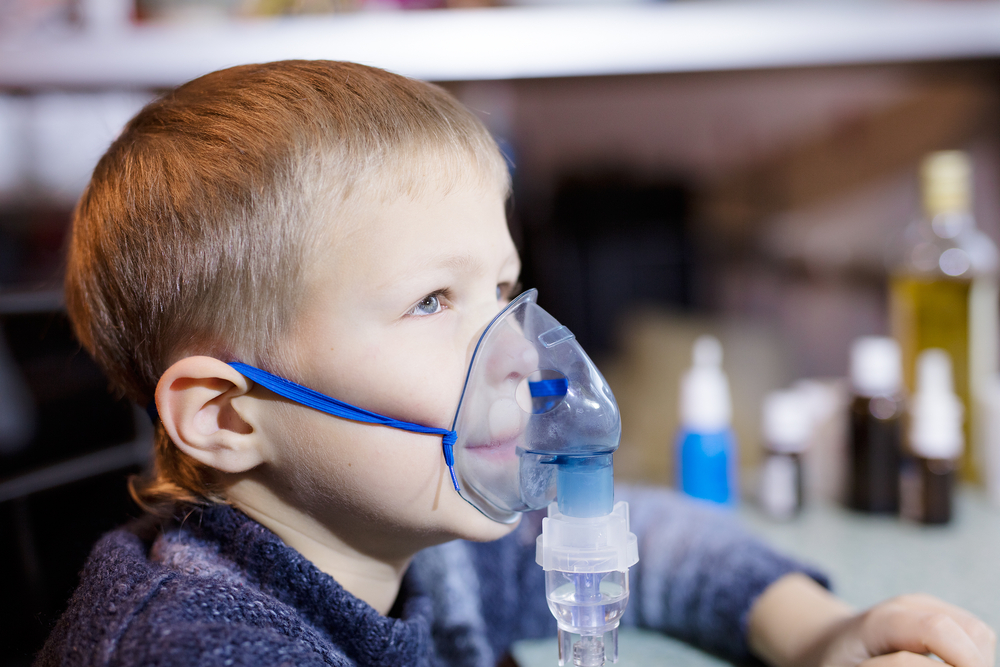Respiratory Weakness in SMA Most Pronounced in Childhood, Study Finds

[et_pb_section fb_built=”1″ admin_label=”section” _builder_version=”3.22″][et_pb_row admin_label=”row” _builder_version=”3.25″ background_size=”initial” background_position=”top_left” background_repeat=”repeat”][et_pb_column type=”4_4″ _builder_version=”3.25″ custom_padding=”|||” custom_padding__hover=”|||”][et_pb_text admin_label=”Text” _builder_version=”3.27.4″ background_size=”initial” background_position=”top_left” background_repeat=”repeat”]Lung function in people with earlier-onset forms of spinal muscular atrophy (SMA) tends to decline gradually throughout childhood and stabilizes in early adulthood, according to data from a population-based natural history study.
The study, “Natural history of lung function in spinal muscular atrophy,” was published in the Orphanet Journal of Rare Diseases.
SMA comprises a group of neurodegenerative disorders characterized by the gradual loss of motor neurons — the nerve cells responsible for controlling voluntary muscles — in the spinal cord, leading to muscle weakness.
“Increased understanding of the disease course through natural history studies of the past decade has helped clinicians with providing timely supportive care and facilitated clinical trial design to test efficacy of recently developed … drugs,” the researchers wrote.
Many features of SMA have yet to be fully explored, including the evolution of patients’ respiratory muscle weakness and lung function decline. This gradual decline is the main cause of death and morbidity among those with the disease.
Investigators at Utrecht University in the Netherlands used spirometry tests to evaluate lung health in 170 SMA patients, ages 4 to 74. All were participating in a prospective, population-based prevalence cohort study on SMA in that country, and all were not being treated for their disease.
Lung function measures assessed by spirometry included forced vital capacity (FVC) and forced expiratory volume in one second (FEV1), and vital capacity (VC).
FVC and VC both measure the total amount of air a patient is able to exhale after taking a deep breath, while FEV1 measures the total amount of air a patient is able to exhale in one second after taking a deep breath.
Researchers analyzed a total of 2,098 lung function measures obtained over an average of 4.4 years in the 170 people with SMA type 1c, 2, 3, and 4 included in the analyses. Most had SMA type 2a (48 patients) and type 3a (43 patients); 35 had type 3b, and 34 had type 2b. Six patients had type 1c (the most severe type included in this study), and four had type 4 or adult-onset disease.
Patients with earlier-onset forms of SMA (types 1c–3a) experienced a progressive decline in lung function during childhood, which stabilized as they turned adults.
At baseline (study’s starting measures), all lung function parameters had lower values indicating poor lung function in patients with the most severe forms of SMA, like borderline types 1 and 2 (1c–2a) the researchers wrote.
Percentages of FEV1 ranged from 42% in those with SMA type 1c to 100% in those with type 3b, while FVC values ranged from 50% to 109% and those of VC from 44% to 96%, again comparing more SMA 1c to 3b.
Rates of lung function decline also differed substantially between patients with different forms of SMA, being more accentuated in those with more severe disease subtypes.
Lung function in people with later-onset forms (SMA type 3b and 4), “with some exceptions,” likely will be stable throughout life. Indeed, “in adults and particularly those with milder SMA types (i.e., types 3b and 4) lung function may be more stable than skeletal muscle strength,” the researchers wrote.
“The natural history of lung function in SMA is characterized by a progressive decline, particularly in SMA types 1c, 2, and 3a. This decline is most pronounced in (early) childhood and stabilizes in early adulthood,” they concluded.
“Our data may serve as a reference to assess longer-term outcomes in clinical trials.”[/et_pb_text][/et_pb_column][/et_pb_row][/et_pb_section]
